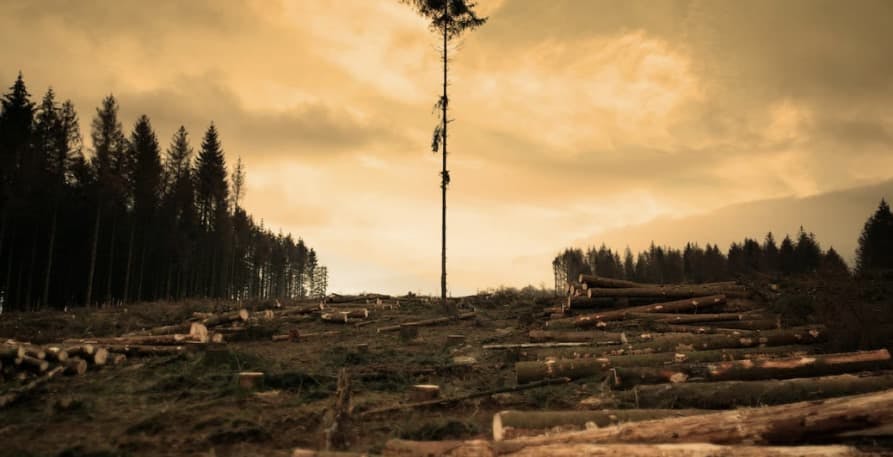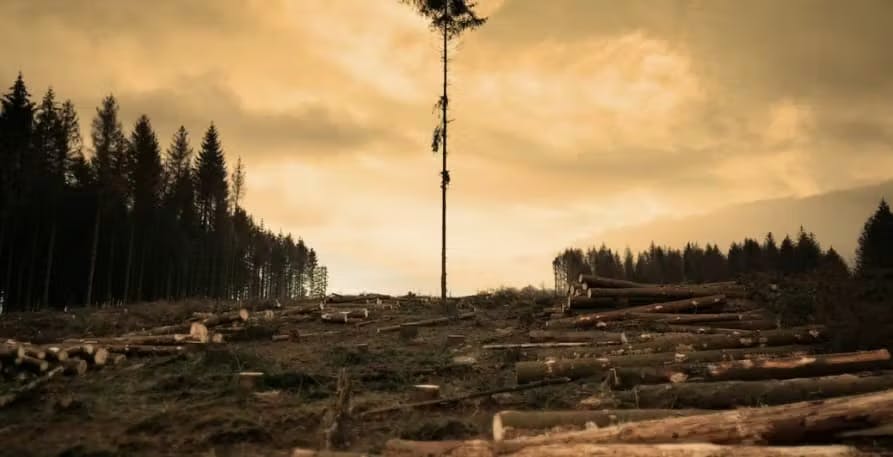
What are the 3 Pillars of Corporate Sustainability?
In this article, we'll explore what the 3 pillars of corporate responsibility are, why they're important, and how businesses can turn them into practical action.
ESG / CSR
Industries



Did you know that reforestation is potentially one of the easiest carbon offset projects for companies to invest in to counteract their previous greenhouse gas emissions, and reduce climate change?
Everyone is always talking about how planting trees can help mitigate climate change, but how can reforestation be the answer for the globe and companies seeking sustainable solutions?
Reforestation is the process of attempting to reverse or aid the negative effects of deforestation by planting new trees in place of forests that have already been destroyed due to industrialisation or agriculture needs.
Reforestation is the process of replanting trees in area where deforestation has already occurred in attempts to restore the forest and ecosystems that once already existed.
Large forests help to absorb excess carbon dioxide emissions in the atmosphere by producing oxygen. Therefore, it is imperative to plant an overwhelming amount of new trees in order to alleviate the effects of carbon emissions on climate change. Also, replanting trees will help to re-established ecosystems and improve biodiversity and the availability of natural and sustainable resources.
Deforestation is the decrease of forest land around the globe. These forests and natural green spaces or lands imperative to our ecosystem are destroyed for the sake of future agricultural croplands, urbanisation, or other various industrial activities.
Deforestation has been on the rise since the 1960s, and has rapidly increased in correlation with intense industrialisation as human settlement has continued to modernise. Deforestation is detrimental to our life on Earth as it directly impacts our natural ecosystems, biodiversity, and climate change.
Deforestation contributes to soil erosion, which can lead to lack of sufficient food production and in turn – forces natives to flee their natural habitats or settlements, and impacts all other forms of life (i.e. animal species, plants, flowers, etc.) that are vital to promoting a healthy ecosystem to provide the resources necessary for healthy human life.
The natural imbalance caused by deforestation can completely destroy an entire ecosystem. For example, take a tropical location – where there are often a multitude of various forests ranging from wet to hot. These forests align their leaf’s life-cycle in accordance to the climate – some trees in certain forests will shed their leaves during the drier seasons and become woodlands to better fit the needs of the ecosystem depending on the season and needs of the wildlife in the area.
Common ways to prevent the need for further deforestation includes eating less meat, consuming less to reduce the need for supply and demand, and to reduce the use of fossil fuels or palm oils that contribute to greenhouse gas emissions and global warming.


Many are unable to alter their daily habits to completely mitigate deforestation, therefore – individuals and companies alike often refer to reforestation instead.
Life simply cannot survive without trees and the oxygen that they emit into the atmosphere, and their presence on our planet has only become more imperative as global temperatures continue to rise.
Reforestation can help to re-enrich soil with crucial nutrients, re-balance an ecosystem that has suffered the effects of excessive deforestation and carbon emissions, and increase food production as trees provide resources for various agricultural means.
Reforestation predominantly seeks to establish sustainable life and resources in forests by restoring biodiversity, reversing soil erosion, improving water basins, and preserve overall human health.
Most notably, reforestation can help reduce climate change – as a large amount of trees can absorb excessive amounts of carbon dioxide and other greenhouse gas emissions that are contributing to climate change and global warming.
There are two common types of reforestation: urban reforestation and rural reforestation.
Urban reforestation consists of planting trees in already developed communities. Urban reforestation is contingent on the city’s environmental needs, such as improving air quality due to heavy traffic that produces excess greenhouse gas emissions.
Rural reforestation refers to replanting trees in areas where deforestation has already occurred. Therefore, rural reforestation usually involves planting a much larger amount of trees than urban reforestation. Reforestation can also occur in new areas where deforestation hasn’t occurred in attempts to create a new sustainable and productive home for wildlife whilst still reducing excess carbon emissions.


There’s an all too common, colloquial saying that often comes with reforestation – that our way out of climate change is to, "plant a million new trees.”
Reforestation is a relatively cheap way to promote carbon reduction – seeing as a third of the planet is covered by forests, anyways. Since trees offer a wide variety of environmental benefits such as storing carbon dioxide, improving soil quality, and providing shade to homes that can ultimately help to reduce the cost of excessive energy consumption: it makes sense that the easiest, most logical answer to combat climate change is to just plant a bunch of trees.
Forests only account for half of the carbon emissions from excessive industrial activity. In short, reforestation cannot help to mitigate all greenhouse gas emissions contributing to climate change – as the ocean and forests can only absorb a certain amount of carbon emissions.
According to the climate change goals established by the Paris Climate Agreement, the most imperative action an organization, company, individual or developing country can take to reduce climate change is to directly reduce their own carbon or greenhouse gas emissions.
Planting trees doesn't harm the environment by any means; reforestation is a beneficial approach to improve the state of global warming. However, it is crucial to do anything and everything possible to reduce climate change. This includes planting trees through reforestation, investing in carbon offsetting projects, purchasing carbon credits, installing a carbon capture and storage system, as well as creating a sustainable business plan that seeks to pertain to the ongoing climate change crisis.
While new technologies to remove already existing carbon dioxide emissions from the atmosphere are in progress, such as carbon capture and storage – it is vital that companies do not rely solely on offsetting tactics to reduce climate change, but rather combine their sustainability efforts and carbon offset investments at the same time.
Reforestation can help to improve your business as your dedication to tree planting will illustrate your company’s commitment to fight against climate change and wholesome efforts to promote sustainable practices.
Investors are more likely to invest in a project, company, or organisation that practices corporate sustainability. If a company contributes to reforestation projects, consumers and investors alike will be able to establish a greater sense of trust with the company and their environmental mission. Therefore, business is likely to increase if customers and potential stakeholders align with he company’s efforts to combat climate change.


While reforestation is a good way to help reduce greenhouse gas emissions, reforestation presents various existing problems with deforestation, protecting existing wildlife, and the approach to mitigating climate change.
In accordance to the Global Forest Resources Assessment 2020, otherwise known as the FAO – over 20 billion hectares of forest are planned to be modified or improved. Therefore, it is imperative to not only focus on reforestation, but to ensure smooth, safe, and efficacious operational methods to restore these forests.
For example, crops from large forests can dry out and deplete the soil due to excess salt content. This is an example of why carefully choosing which trees and how the position in which they are planted is imperative so that the species of trees are well suited to benefit the crops and wildlife in each particular forest.
Poor reforestation can ultimately lead to more environmental problems. In order to not achieve this undesired result, it is crucial to realise that with most things in life – less is more, and quality over quantity.
In other words, it is better to rebuild and create sustainable and healthy ecosystems with new forests than to blindly plant a million trees for the sake of reducing carbon emissions.
Here are just a few companies that have committed to sustainability and contributed to reforestation.
This popular computer brand has illustrated their desire to promote sustainability and reforestation by pledging to plant 1 million trees by 2020 to create a natural form of carbon sequestration. They achieved their goal three years early, in 2017.
Dell perpetuates their sustainable ideals by continuing to offer their customers the opportunity to donate to reforestation with each purchase.
The Eden reforestation was created in 2004, and aims to use reforestation to combat poverty in developing countries. This promotes sustainability as they are using reforestation to improve another sector that has been impacted by climate change.
Catered towards students in need of student loans, refinancing, personal loans, or credit cards – this sustainable company seeks to improve the planet’s overall ecology through reforestation. They are partnered with One Tree Planted, which is a company that strives to bring awareness to reforestation and the importance of planting trees while making education accessible to all.
All of these companies are not only passionate about reforestation, but they are dedicated to achieving other goals in line with the sustainable ideal of reforestation as a whole – to build a better planet for a better life.


The biggest, most ambitious reforestation project to date is the tropical reforestation for the Amazon in Brazil – which is aiming to replant over 73 million trees by 2023.
Other impressive reforestation projects include the reforestation done in South Korea, the Kwimba reforestation project in Tanzania, the Appalachian Reforestation project in the United States, and the reforestation project being done in the Mixteca region of Mexico.
Reforestation is by no means the only way to be sustainable or promote environmentally friendly habits within your company.
Here are a few ways you can reduce climate change without resorting to reforestation.
By eating less red meat, you reduce your water consumption, which directly lowers the need for deforestation, and ultimately – the need for reforestation.
So eating a plant-based meal once a week in place of your typical T.V. dinners will do the forests and their wildlife good.
The reason reforestation exists in the first place is because so many forests are being cut down in order to fulfill the increased demand for various merchandise – such as fast fashion.
The infamous phrase, “reduce, reuse, recycle” comes into play here.
If you subscribe to more sustainable practices, like sustainable fashion or using reusable grocery bags when you shop – the rapid increase in demand for new, unnecessary items will inevitably come to a halt.
Excessive use of harmful chemicals like fossil fuels or palm oils directly impacts deforestation, and could prevent the need for reforestation. Using public transportation like the metro, walking, or bike riding is a great way to reduce carbon emissions while preventing deforestation.
If reading this article about reforestation has made you interested in reducing your carbon emission to further fight against climate change – Greenly can help you!
Greenly can help you make an environmental change for the better, starting with a carbon footprint assessment to know how much carbon emissions your company produces.
Click here to learn more about Greenly and how we can help you reduce your carbon footprint.